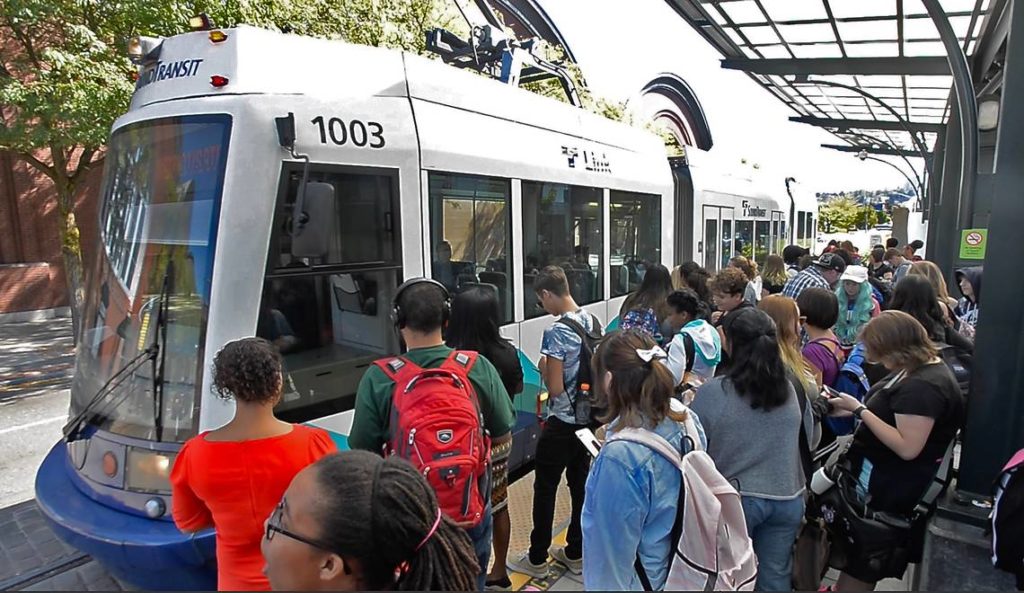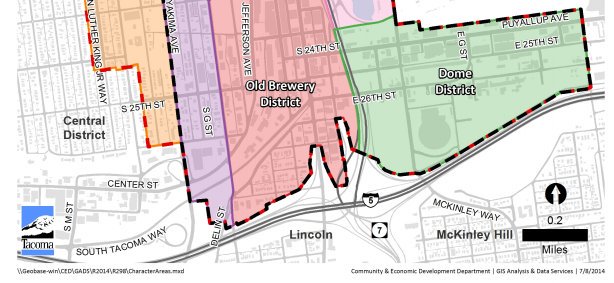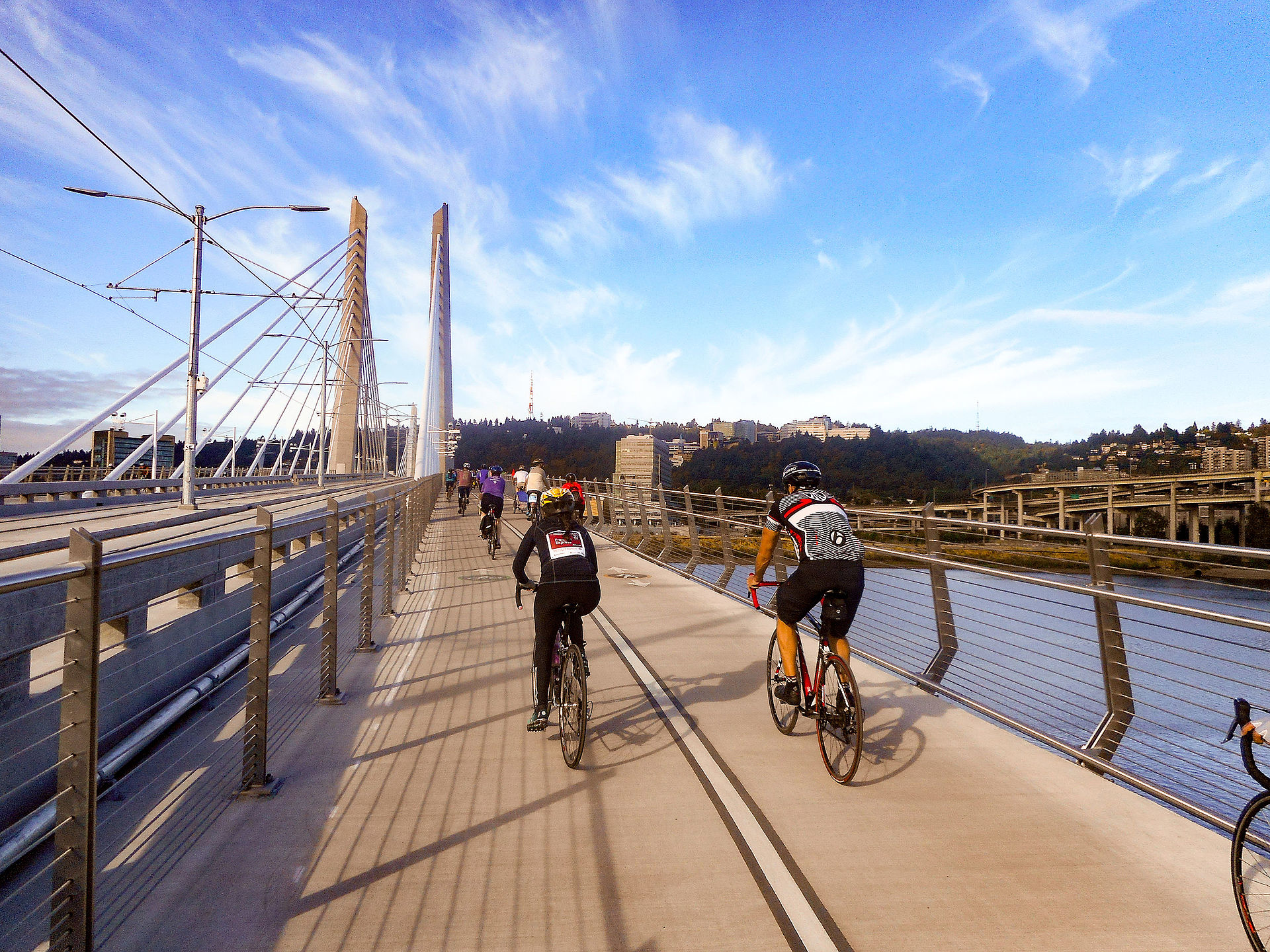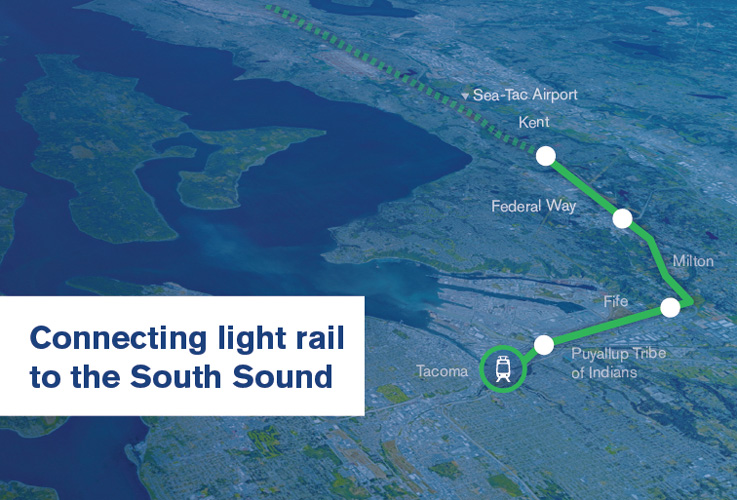For the South Sound, extension of regional Link light rail to Tacoma in 2030 will be a crowning achievement of work first envisioned in the late 20th century. Frequent, reliable, all-day electric train service to Federal Way, South King County, and Seattle-Tacoma International Airport will bring about a renaissance of transit mobility not seen since the 1930’s.
The representative project for the Tacoma Dome Link Extension, approved by voters in Sound Transit 3 (ST3), will cost roughly $2 billion and span roughly 10 miles. The mostly elevated route between Federal Way Transit Center and Tacoma is projected to carry between 27,000 and 37,000 riders per day between a series of stations in South Federal Way, Fife, East Tacoma, and Tacoma Dome.
What we don’t know is what else it could be.
With a little flexibility, Sound Transit could go from a run-of-the-mill elevated rail project, to a transformative corridor that comprehensively improves the mobility, access and quality of life of thousands more in the South Sound.
Early community involvement in project scoping is incredibly important. While projects do change over the course of design, as Sound Transit gets closer to getting shovels in the ground, decisions become less about what a project can and should be about, and becomes more about finer details.
Additionally, there is a lot of pressure to accelerate the extension, maybe even open it earlier than 2030, so the window to provide input on the purpose, goals, and vision of the project is a mere month long, with a single open house happening in Tacoma today. So if there’s any point in time to ask for something specific to be considered, it’s now. I am encouraging transit riders, residents, and workers in Tacoma to get involved and to provide your input at the open house or via the online open house.
With that said, here are a few ideas I am laying on the table considering what type of city and region we will want to be in 2030 and in the decades following.
Seamless Integration with Tacoma Link

Tacoma Link in 2030 is projected to transport more than 10,000 riders a day between Hilltop, Downtown Tacoma and Tacoma Dome. With no parking expansion planned for Tacoma Dome Station, Tacoma Link will be the most important mode for accessing regional light rail in Tacoma. Central Link and Tacoma Link stations should be within a short walking distance with a direct path.
Add a Light Rail Station to the Brewery District

It’s been said before that stopping short of Pacific Avenue in Downtown Tacoma would be like terminating light rail in Seattle at SODO. Another half-mile of track west and a station in the Brewery District of Tacoma could alleviate access issues at Tacoma Dome Station, while connecting with the Prairie Line multi-use trail. Additional transit-oriented development in the Brewery District would boost ridership and improve growth management in Pierce County, which is sorely needed.
Locate the Maintenance Facility in Pierce County
Pierce County is contributing substantially to projects of regional significance in ST3, such as the proposed South Link operations and maintenance facility. The maintenance facility should be located in Pierce County, to provide jobs for nearby workers who need them. King County will already have two maintenance facilities in Seattle and Bellevue. Additionally, Sound Transit should consider how track leading to the maintenance facility could be used to further the long-term vision of reaching the Tacoma Mall Regional Growth Center.
Study a Multimodal Puyallup River Crossing

A new rail bridge will be needed to cross from Fife to Tacoma over the Puyallup River. Currently it is dangerous to make this crossing without a car. As transit riders generally start as pedestrians or cyclists, improving the access of one mode, generally helps the other. Portland’s Tilikum Crossing is an example of combined transit and non-motorized infrastructure that can cost-effectively work together. This should be the standard Sound Transit works towards achieving.
Consider Comprehensive Multimodal Project Design
As the extension will be mostly elevated, there may be an opportunity to improve the safety of accessing stations by foot or bicycle that goes beyond improving sidewalks a quarter-mile from the stations. If a contiguous 10-mile bike path between Tacoma, Fife, and Federal Way could be integrated into the project, underneath the elevated guideway, it could help to solve “last mile” access, while doubling as a supportive maintenance or emergency access facility. Improving access in this way could be a lower cost alternative or supplement to constructing planned vehicular parking garages.
Enclose the Tacoma Dome Link Station
The Tacoma Dome Station should be a high quality, enclosed, and heated structure with at-grade pedestrian access and restrooms. The area just beyond the station platforms should provide space for food and information kiosks like those found in train stations in Europe or Asia. The climate in Puget Sound is becoming wetter in winter, so we should design infrastructure to make passengers as comfortable as possible while they wait for their next train.
Please add your own ideas by attending the open house or contributing your thoughts online by May 3rd 2018:
Tacoma Dome Link Extension Open House
When: Tuesday, April 17, 2018 – 6:00 pm to 8:00 pm
Where: Best Western Plus Tacoma Dome Hotel, 2611 East E Street, Tacoma, WA 98421
This is a cross-post of an article that originally appeared on Tacoma Transit.
Chris Karnes a native of Tacoma and well known local writer behind the Tacoma Transit blog.



